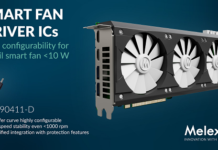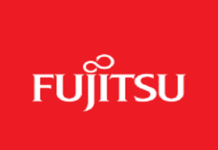The global Power Semiconductor Market was valued at USD 53 billion in 2024 and is projected to reach a valuation of USD 97.4 billion by 2037, growing at a CAGR of 4.8% during the forecast period from 2025 to 2037. This steady growth is fueled by increasing demand across various industries including automotive, telecommunications, industrial equipment, and consumer electronics, where efficient power management and energy conservation have become paramount.
Power Semiconductor Industry Demand
Power semiconductors play a vital role in managing high-voltage functions and are essential components in systems that require accurate and efficient power control. They are widely used in applications such as electric vehicles (EVs), data centers, renewable energy installations, and smart grid technologies.
The growth of this market is largely fueled by a global shift toward energy-efficient technologies, the rapid rise in EV manufacturing, and the increasing reliance on renewable energy. These components are known for their affordability in managing power, compatibility with complex electronic systems, and extended service life. Such features make them highly attractive for industries aiming to cut energy waste, lower operating expenses, and boost system performance. As a result, power semiconductors have become fundamental to both traditional power systems and next-generation digital infrastructure.
Power Semiconductor Market: Growth Drivers & Key Restraint
Growth Drivers –
- Technological Advancements in Power Electronics:
The industry has seen rapid innovations, including the rise of wide-bandgap materials like silicon carbide (SiC) and gallium nitride (GaN), which offer superior efficiency and performance over traditional silicon-based semiconductors. - Electrification of Vehicles and Industrial Automation:
The global shift toward electric vehicles and automation has significantly increased the demand for power semiconductors, which are crucial for controlling power flow and enhancing battery performance in EVs and industrial machines. - Renewable Energy Expansion and Energy Efficiency Initiatives:
With governments and corporations investing in clean energy solutions, the demand for efficient power management components has grown. Power semiconductors are essential in solar inverters, wind turbines, and smart grids, driving their widespread adoption.
Restraint –
Elevated Production Costs and Fabrication Challenges of Next-Generation Materials:
Although advanced materials like SiC and GaN offer high efficiency, their production costs and complex fabrication processes limit their accessibility for some applications, especially in price-sensitive markets. This slows down full-scale adoption despite their technical advantages.
Power Semiconductor Market: Segment Analysis
Segment Analysis by Component–
Discrete: These include individual power semiconductor devices such as diodes and transistors.
Module: Power modules, integrating multiple devices into one package, are favored in high-power environments like industrial drives and automotive inverters.
Power Integrated Circuits (ICs): Power ICs combine analog and digital functions to optimize power management. Their usage is surging in smartphones, consumer electronics, and IT systems, where space efficiency and energy savings are critical.
Segment Analysis by Material –
Silicon/Germanium: As the traditional base for most semiconductors, silicon remains widely used due to its cost-effectiveness and mature processing ecosystem. Germanium is often used in combination with silicon for enhanced mobility.
Silicon Carbide (SiC): It is increasingly used in EVs, renewable energy systems, and high-voltage industrial applications.
Gallium Nitride (GaN): GaN materials enable faster switching and greater efficiency. This segment is gaining traction in fast chargers, 5G infrastructure, and aerospace systems due to their high-frequency performance.
Segment Analysis by Application–
Automotive: Power semiconductors are central to EVs, hybrids, and autonomous vehicles. They control power delivery to motors, manage battery systems, and contribute to efficient energy usage.
Consumer Electronics: In smartphones, laptops, and home appliances, power ICs enable energy efficiency and battery optimization, supporting the demand for compact and durable devices.
Military and Aerospace: These sectors use power semiconductors in communication systems, avionics, and defense-grade equipment, where reliability and precision are critical.
Power: Power semiconductors manage energy flow in power generation and distribution systems, especially in renewable energy setups like solar PV and wind.
IT and Telecommunication: The demand for data processing and connectivity drives the need for high-efficiency power regulation in servers, data centers, and telecom infrastructure.
Industrial: Automation, robotics, and industrial control systems depend on high-performance power devices to ensure reliability and operational continuity.
Power Semiconductor Market: Regional Insights
North America:
The region shows strong demand due to its robust automotive sector, expanding renewable energy infrastructure, and early adoption of advanced semiconductor technologies. Government incentives for clean energy and electrification further stimulate growth. The U.S. continues to be a dominant player, driven by innovation and strategic investments in semiconductor R&D.
Europe:
Europe’s focus on sustainability and emission reduction has accelerated the adoption of EVs and renewable energy systems, fueling the power semiconductor market. The region also benefits from strong government backing for smart grid deployment and energy efficiency, making it a fertile ground for high-performance semiconductor solutions.
Asia-Pacific (APAC):
APAC leads the market in manufacturing and consumption. Countries like China, Japan, South Korea, and India are hubs for consumer electronics, automotive manufacturing, and industrial automation. The region’s cost-effective production base, rising middle-class consumer demand, and government support for semiconductor manufacturing make it the fastest-growing region in the market.
Top Players in the Power Semiconductor Market
Key players shaping the Power Semiconductor Market include Texas Instruments Inc., United Silicon Carbide Inc., ON Semiconductor Corporation, Broadcom Inc., ST Microelectronics NV, NXP Semiconductor Inc., Semikron International, Hitachi America, Ltd., Wolfspeed Inc., Vishay Intertechnology Inc., Nexperia BV, Alpha & Omega Semiconductor, Magnachip Semiconductor Corp, Maxpower Semiconductor, Power Semiconductors, Inc., Microchip Technology Inc., and Littlefuse Inc. These companies are at the forefront of innovation, offering diverse portfolios to cater to automotive, industrial, and consumer sectors while investing heavily in R&D for next-generation power devices.
Source: https://www.researchnester.com/reports/power-semiconductor-market/7303















